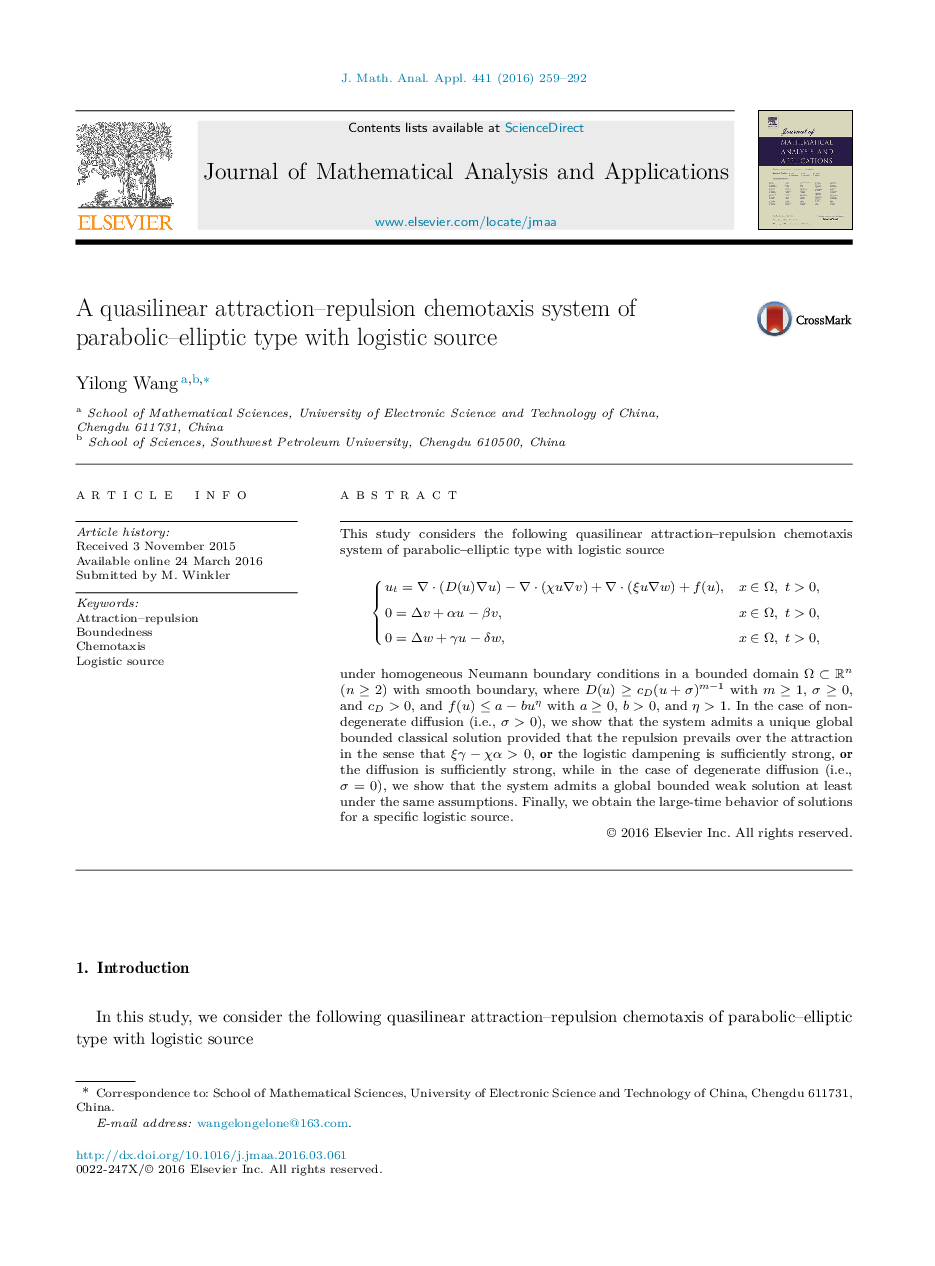| Article ID | Journal | Published Year | Pages | File Type |
|---|---|---|---|---|
| 4614250 | Journal of Mathematical Analysis and Applications | 2016 | 34 Pages |
This study considers the following quasilinear attraction–repulsion chemotaxis system of parabolic–elliptic type with logistic source{ut=∇⋅(D(u)∇u)−∇⋅(χu∇v)+∇⋅(ξu∇w)+f(u),x∈Ω,t>0,0=Δv+αu−βv,x∈Ω,t>0,0=Δw+γu−δw,x∈Ω,t>0, under homogeneous Neumann boundary conditions in a bounded domain Ω⊂Rn (n≥2)Ω⊂Rn (n≥2) with smooth boundary, where D(u)≥cD(u+σ)m−1D(u)≥cD(u+σ)m−1 with m≥1m≥1, σ≥0σ≥0, and cD>0cD>0, and f(u)≤a−buηf(u)≤a−buη with a≥0a≥0, b>0b>0, and η>1η>1. In the case of non-degenerate diffusion (i.e., σ>0σ>0), we show that the system admits a unique global bounded classical solution provided that the repulsion prevails over the attraction in the sense that ξγ−χα>0ξγ−χα>0, or the logistic dampening is sufficiently strong, or the diffusion is sufficiently strong, while in the case of degenerate diffusion (i.e., σ=0σ=0), we show that the system admits a global bounded weak solution at least under the same assumptions. Finally, we obtain the large-time behavior of solutions for a specific logistic source.
